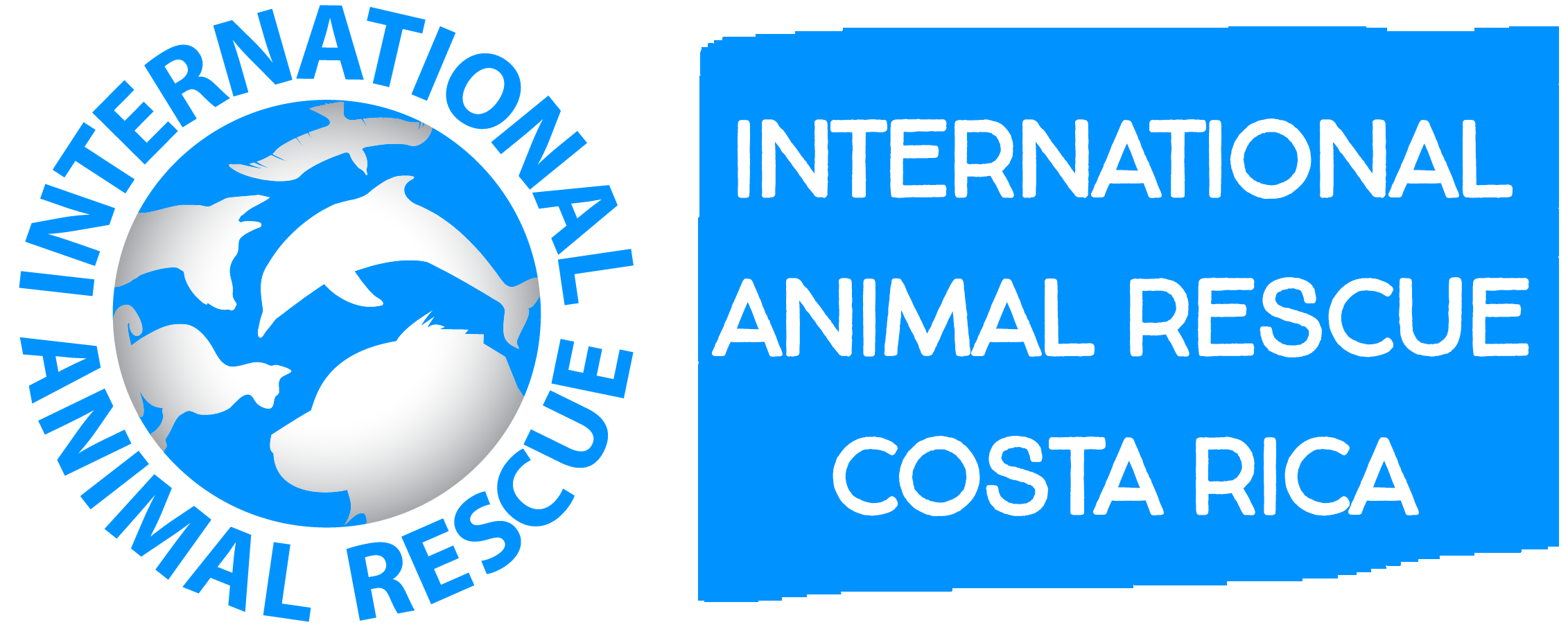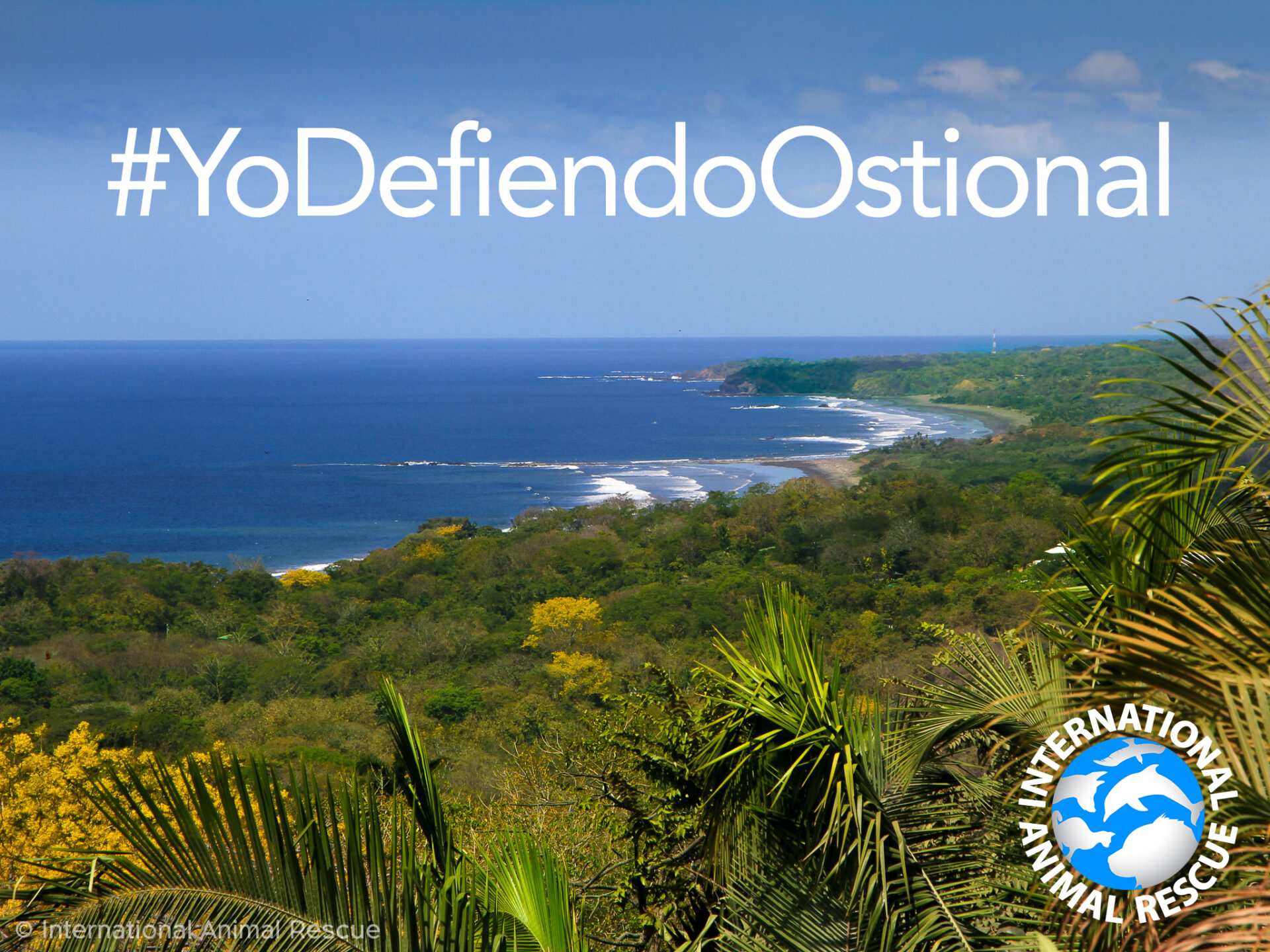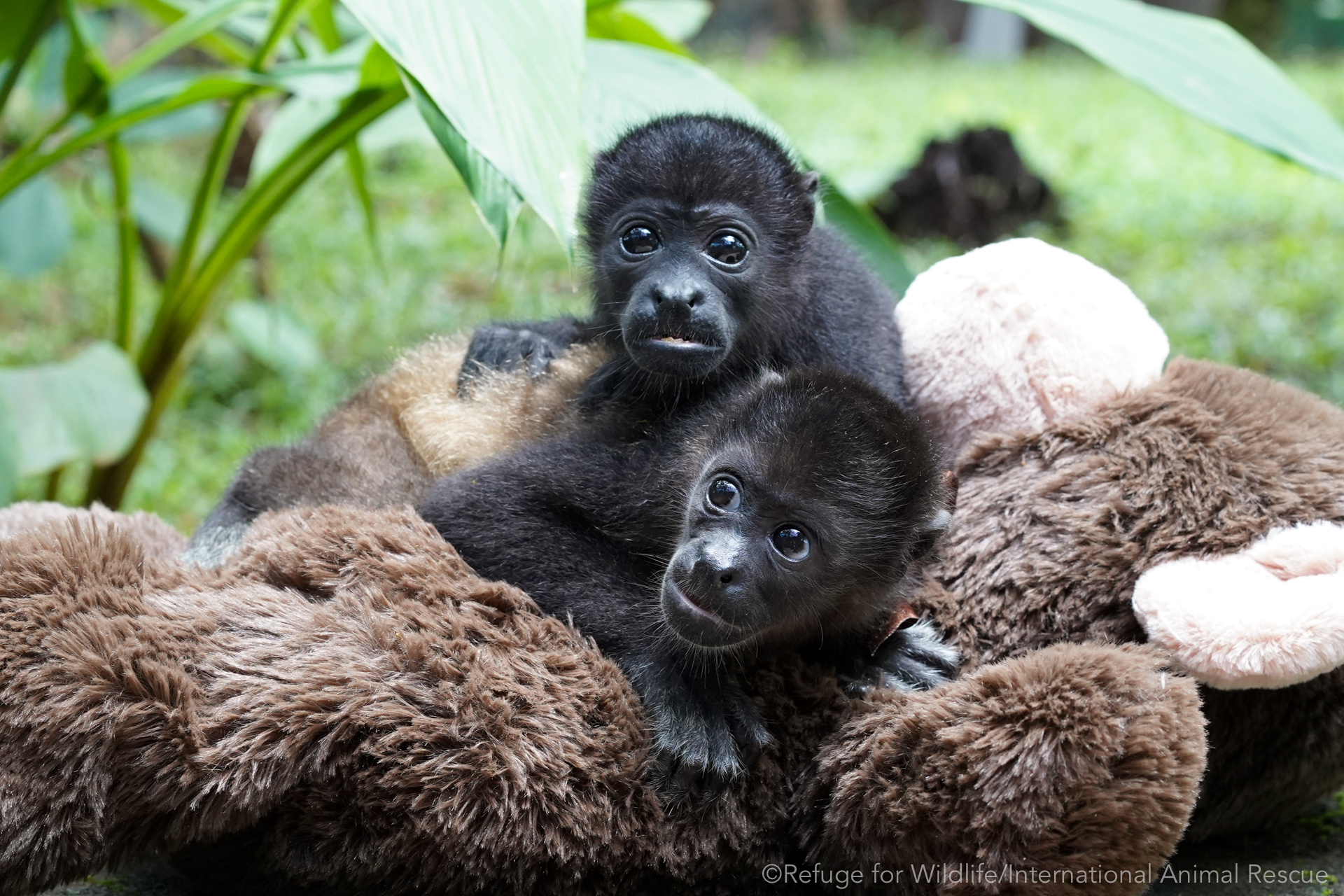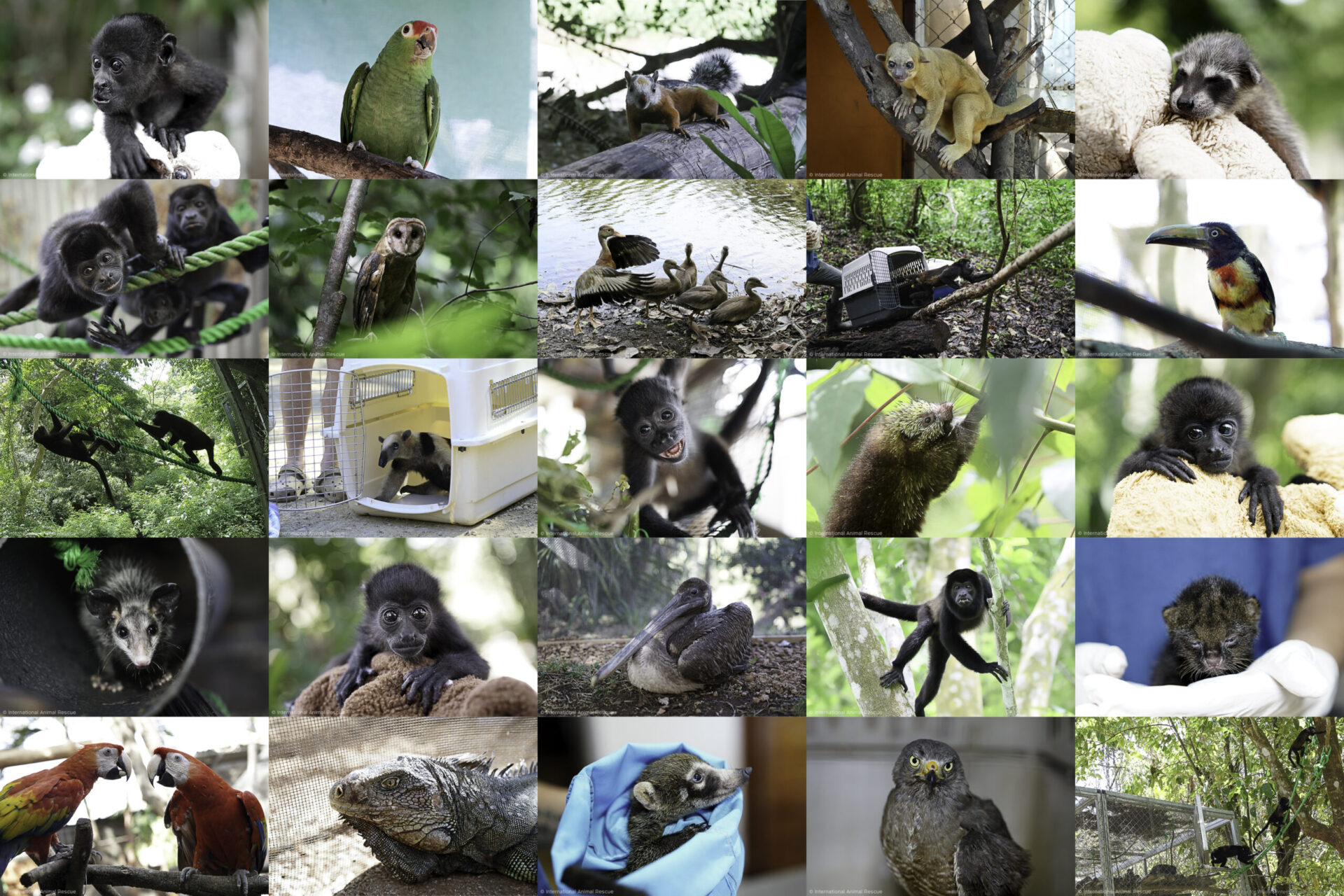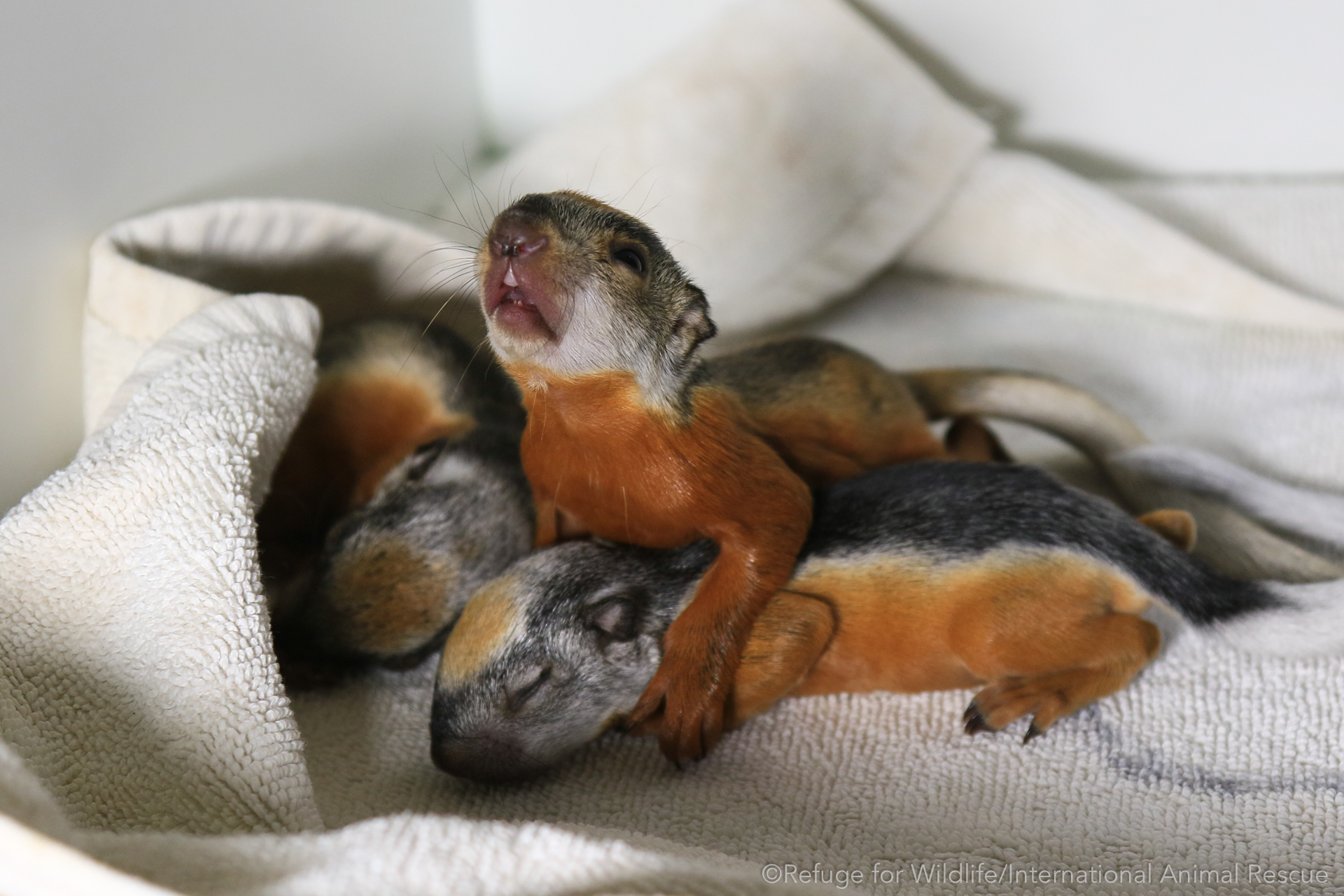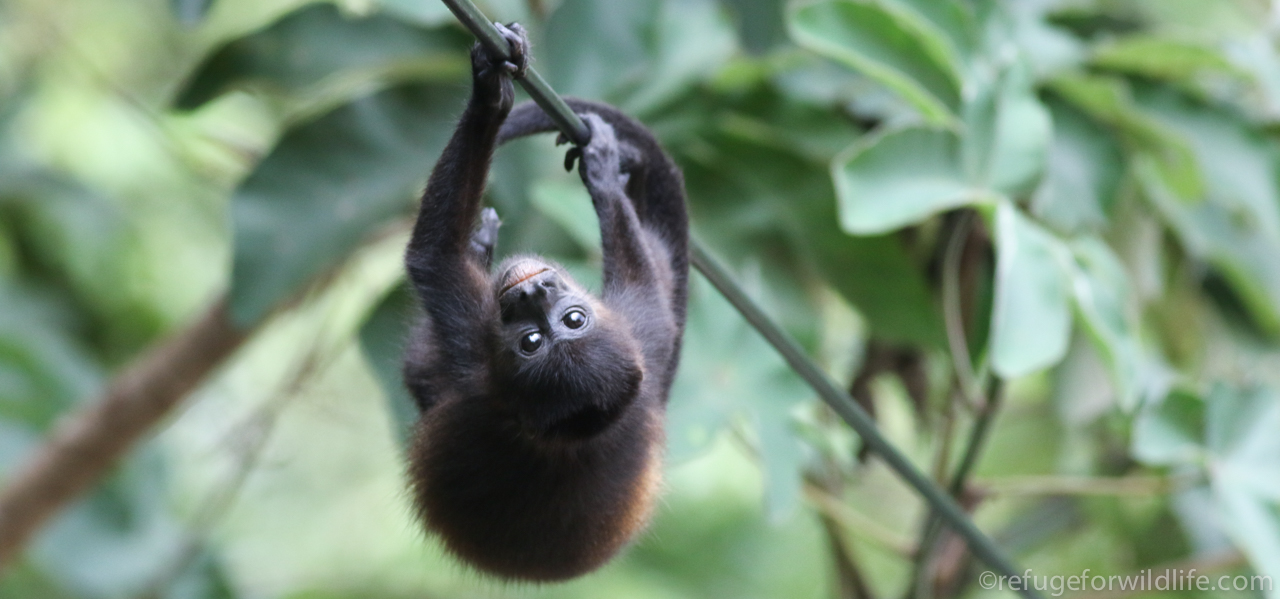
Want To Hold A Monkey?
Many visitors might be disappointed to learn that at Refuge for Wildlife we do not allow visitors to hold monkeys. Although you can get pretty close to some of the animals at the Refuge, you will not get to hold a baby monkey. Here’s why…
THE PROBLEM WITH ANIMAL TOURISM
There are many zoos, rescue centres, marine parks and refuges that will let you have a magical encounter with a wild animal. You can swim with dolphins in Mexico, ride on elephants in Thailand, hold a koala in  Australia. Sure, it sounds like it would be an amazing experience to get close to these animals, but remember that these animals are being exploited to make money for those companies. Do your research and find out more about the company. Where do the animals come from – are they rescued and rehabilitated and released? Or are they captured from the jungle, ocean or forest? Will they be released or are they trapped in an 8 foot chlorinated pool for the rest of their lives? Remember that every cent you give to places that mistreat animals only encourages them to continue doing it.
Australia. Sure, it sounds like it would be an amazing experience to get close to these animals, but remember that these animals are being exploited to make money for those companies. Do your research and find out more about the company. Where do the animals come from – are they rescued and rehabilitated and released? Or are they captured from the jungle, ocean or forest? Will they be released or are they trapped in an 8 foot chlorinated pool for the rest of their lives? Remember that every cent you give to places that mistreat animals only encourages them to continue doing it.
WE DO NOT EXPLOIT ANIMALS FOR PROFIT
Some rescue centers let you go inside the enclosure and feed baby monkeys for a extra fee. I’m sure you’re thinking “Whoa, that sounds awesome! I want to hold a baby monkey and feed it! I’m going there!”, but stop and think. They’ve told you these animals are going to be released back into the jungle, right? How is that going to be possible if they are tame around humans and hand-fed by visitors? Did you know that some rescue centers actually withhold food from the monkeys so that they will be more willing to be fed by strangers? Did you know that is can be very stressful for some of the more emotional animals, like howler monkeys?
 Do you really believe it is right for a wild animal to be passed around by countless visitors who just came off a long bus or plane ride that is most definitely filled with germs? Is it OK to risk the health of the animals and have them sit on the heads of coughing tourists so they can get a photo? Human germs and illness can easily be spread to the animals at a rescue centre and for some, it can be deadly. We have seen first hand how the human flu virus can kill howler monkeys. Howlers have extremely delicate digestive systems and one stomach bug can cause death in less than a few days. This is why, even though you will not get to touch any of the monkeys at Refuge for Wildlife, all visitors must be in good health and have been in the country for several days to make sure they didn’t catch an illness on the plane or bus. All our staff and volunteers are under strict quarantine rules when they travel and no one is allowed inside the Refuge if they are sick or if they are feeling even slightly unwell. All our staff and volunteers wear face masks and gloves at all times to avoid the spread of illness to the wildlife. We take the health of our animals very seriously. Many of our rescued monkeys have been badly injured and electrocuted and are fighting for their lives because of these injuries, they do not need a stomach flu on top of everything they are trying to fight.
Do you really believe it is right for a wild animal to be passed around by countless visitors who just came off a long bus or plane ride that is most definitely filled with germs? Is it OK to risk the health of the animals and have them sit on the heads of coughing tourists so they can get a photo? Human germs and illness can easily be spread to the animals at a rescue centre and for some, it can be deadly. We have seen first hand how the human flu virus can kill howler monkeys. Howlers have extremely delicate digestive systems and one stomach bug can cause death in less than a few days. This is why, even though you will not get to touch any of the monkeys at Refuge for Wildlife, all visitors must be in good health and have been in the country for several days to make sure they didn’t catch an illness on the plane or bus. All our staff and volunteers are under strict quarantine rules when they travel and no one is allowed inside the Refuge if they are sick or if they are feeling even slightly unwell. All our staff and volunteers wear face masks and gloves at all times to avoid the spread of illness to the wildlife. We take the health of our animals very seriously. Many of our rescued monkeys have been badly injured and electrocuted and are fighting for their lives because of these injuries, they do not need a stomach flu on top of everything they are trying to fight.
HOPE FOR ANIMAL TOURISM
 Thankfully animal tourism is changing. Many visitors are now aware of the cruelty and suffering that is caused by paying for an experience with a wild animal. Whether it’s a photo with a tiger, a ride on an elephant or bottle-feeding a baby monkey, tourists are now aware that these “encounters” are causing harm. They are aware that animals are taken from the wild and forced to sit on people’s shoulders for a “selfie”, perform tricks, or are starved so they will more willingly take food from paying tourists. They realize that posting photos of themselves online holding wild animals only promotes the illegal exotic pet trade by making tame wild animals desirable. They are aware that most baby animals die from human illness because they are held, fed and cuddled by paying tourists. They are aware of the cruelty behind the scenes where animals are beaten and kept in small cages until their spirits are broken and they accept tourist contact. We are pleased to see this change in awareness and shift in what tourists look for in a wildlife “encounter”.
Thankfully animal tourism is changing. Many visitors are now aware of the cruelty and suffering that is caused by paying for an experience with a wild animal. Whether it’s a photo with a tiger, a ride on an elephant or bottle-feeding a baby monkey, tourists are now aware that these “encounters” are causing harm. They are aware that animals are taken from the wild and forced to sit on people’s shoulders for a “selfie”, perform tricks, or are starved so they will more willingly take food from paying tourists. They realize that posting photos of themselves online holding wild animals only promotes the illegal exotic pet trade by making tame wild animals desirable. They are aware that most baby animals die from human illness because they are held, fed and cuddled by paying tourists. They are aware of the cruelty behind the scenes where animals are beaten and kept in small cages until their spirits are broken and they accept tourist contact. We are pleased to see this change in awareness and shift in what tourists look for in a wildlife “encounter”.
6 REASONS WHY YOU CAN’T HOLD A MONKEY AT REFUGE FOR WILDLIFE
 MINAE (Ministerio de Ambiente Y Energia) regulations forbid human contact with rescued wild animals. The only exception is essential care provided by professionals such as veterinarians and trained staff, even then, contact is very limited.
MINAE (Ministerio de Ambiente Y Energia) regulations forbid human contact with rescued wild animals. The only exception is essential care provided by professionals such as veterinarians and trained staff, even then, contact is very limited.- New MINAE rules forbid visitors to enter areas where injured and orphaned wildlife, that will one day be released, are housed. This regulation is especially strict when it comes to primates. This means the monkeys never get used to the sights and sounds of humans at close proximity and lowers the chances that they will approach humans once released.
- Rescue, rehab and release centers are not petting zoos. They are designed to be a place to care for wildlife in need of medical attention and care and a place where releasing wildlife is the top priority. Our goal at Refuge for Wildlife is to have empty enclosures!
- Illnesses are quickly spread from humans to monkeys. This is especially true when dealing with injured wildlife with lowered immune systems that are found in rescue centers. Howler monkeys are particularly susceptible to illness because of their very delicate digestive system – a simple stomach flu is a serious life threatening illness for a howler monkey.
- Exotic pets are illegal in Costa Rica. Taking a wild animal from the jungle is illegal. Caring for an injured or baby animal in your home is illegal. And training a wild animal to be tame around tourists is illegal. If the animal is too dependent on humans to be released, they will spend the rest of their lives behind bars in a zoo.
- Howler monkeys tend to be calm and gentle primates, but they are still wild and can be aggressive, especially adult males. Although all the above rules are in place to safeguard the health and safety of rescued wildlife, these rules also keep visitors safe from aggressive behaviors.
Registered non-profit foundations, like Fundación Albergue de Animales de Nosara (Refuge for Wildlife), must comply with these essential laws that protect Costa Rican wildlife. Any rescue center that allows you to touch, pet, hold or take a photo with a wild animal is breaking the law and is most definitely not registered non-profit and monitored by MINAE (the government institution responsible for managing the resources of Costa Rica for the protection of the environment). Think twice about visiting these rescue centers.

